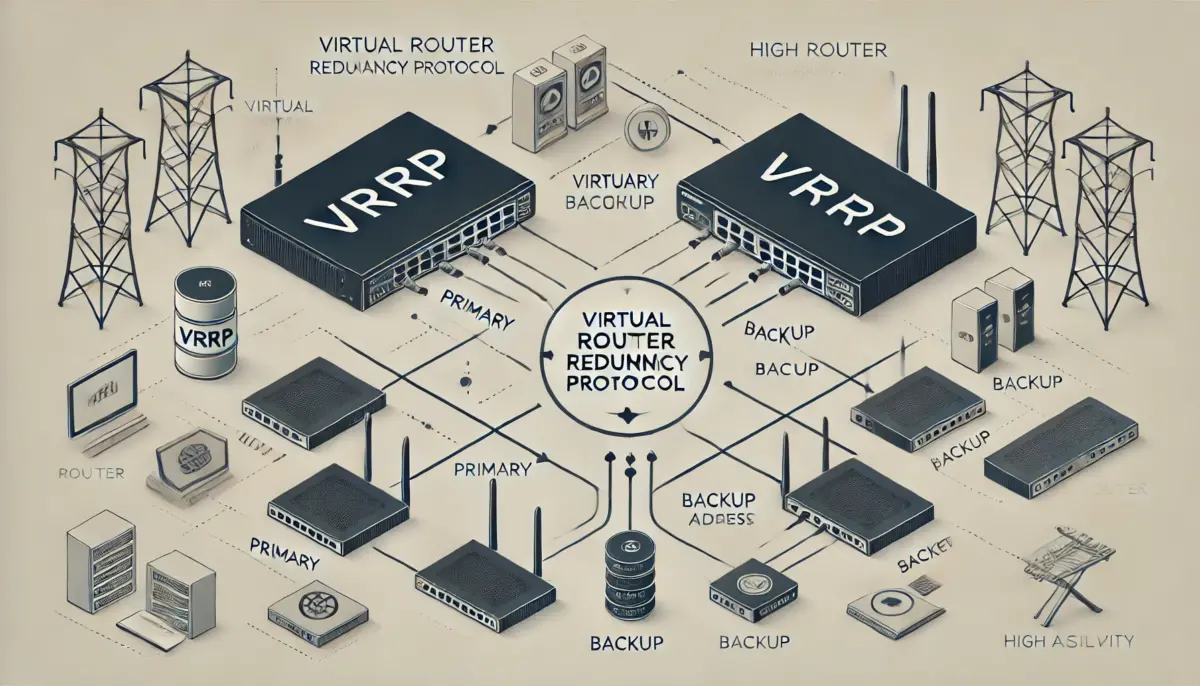The Virtual Router Redundancy Protocol (VRRP) is a network protocol designed to increase the availability of routing paths in a network. By creating a virtual router, VRRP allows multiple routers to work together, ensuring that if the primary router fails, a backup router can take over seamlessly. This failover capability is essential in networks where constant connectivity is a priority.
What Does VRRP Do?
VRRP enables routers to collaborate by assigning them roles as either a primary (or “master”) router or as backup routers. The protocol assigns a “virtual IP address” that represents the entire group, allowing network devices to use a single IP to reach the gateway. If the primary router becomes unavailable, VRRP automatically promotes a backup router to take over, maintaining connectivity without manual intervention.
Key Benefits of VRRP
- Improved Network Reliability:
VRRP provides a reliable failover mechanism, ensuring that if the primary router goes down, a backup router can take over almost instantly. This failover keeps the network operational, making VRRP essential for high-availability networks where interruptions can have serious consequences. - Redundancy Without Manual Intervention:
VRRP automates the failover process, making it faster and more efficient. Instead of requiring manual intervention when a router fails, VRRP promotes a backup router automatically, which helps maintain uptime and reduces the workload on network administrators. - Scalability for Growing Networks:
VRRP supports multiple backup routers, which provides scalability. As network needs grow, VRRP can scale with them, enabling more routers to be added without complex reconfigurations. This allows for a flexible and robust network structure. - Reduced Single Points of Failure:
VRRP decreases the risk associated with single points of failure in network routing. By distributing responsibilities across multiple routers, VRRP ensures that no single router is solely responsible for managing all network traffic.
Potential Drawbacks of VRRP
- Additional Configuration Complexity:
Configuring VRRP requires setting up each router’s role and priority, as well as managing the virtual IP addresses. While not overly complicated, it does introduce additional setup time and requires careful configuration to work effectively. - Network Traffic Overhead:
VRRP routers communicate frequently to check the status of the primary router, which adds some traffic overhead. Although this is generally minimal, it’s worth considering in networks with limited bandwidth or in high-density environments. - Compatibility Limitations:
Not all network devices support VRRP natively. Some routers may require additional software or firmware upgrades to enable VRRP, which can increase costs and add technical steps. - Requires Regular Testing:
For VRRP to work reliably, periodic testing of the failover process is recommended. This ensures that backup routers will actually take over when needed and that the failover process will work as intended during a real outage.
Conclusion
VRRP is an effective solution for adding redundancy to networks by ensuring seamless failover between routers. By promoting a backup router to primary status in case of failure, VRRP keeps networks available and resilient. While VRRP comes with a few challenges in terms of setup and maintenance, its benefits for high availability and reliability make it a valuable tool for any network requiring uninterrupted connectivity.

